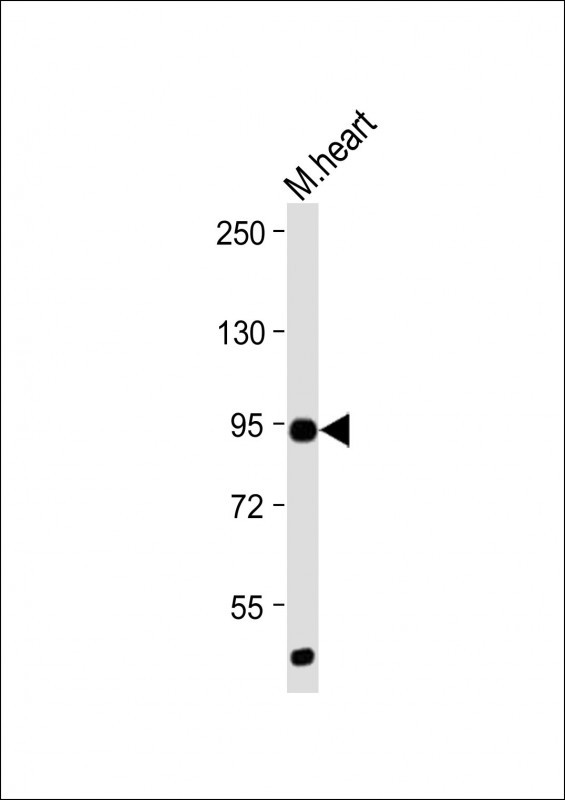
| WB | 咨询技术 | Human,Mouse,Rat |
| IF | 咨询技术 | Human,Mouse,Rat |
| IHC | 咨询技术 | Human,Mouse,Rat |
| ICC | 技术咨询 | Human,Mouse,Rat |
| FCM | 咨询技术 | Human,Mouse,Rat |
| Elisa | 咨询技术 | Human,Mouse,Rat |
| Aliases | Toll-like receptor 2, CD282, Tlr2 |
| Entrez GeneID | 24088 |
| WB Predicted band size | 89.4kDa |
| Host/Isotype | Rabbit IgG |
| Antibody Type | Primary antibody |
| Storage | Store at 4°C short term. Aliquot and store at -20°C long term. Avoid freeze/thaw cycles. |
| Species Reactivity | Human, Mouse |
| Immunogen | This Mouse TLR2 antibody is generated from rabbits immunized with a KLH conjugated synthetic peptide between 720-749 amino acids from the C-terminal region of mouse TLR2. |
| Formulation | Purified antibody in PBS with 0.05% sodium azide,1%BSA and 50% glycerol.prepared by Saturated Ammonium Sulfate (SAS) . |
+ +
以下是3篇关于小鼠TLR2抗体的参考文献,涵盖其在免疫应答、感染和疾病模型中的应用:
---
1. **文献名称**: *"Toll-like receptor 2 (TLR2) is essential for the recognition of peptidoglycan and lipoteichoic acid via distinct mechanisms"*
**作者**: Takeda, K., Kaisho, T., & Akira, S.
**摘要**: 本研究利用TLR2基因敲除小鼠及抗TLR2抗体,证明TLR2通过不同机制识别细菌细胞壁成分肽聚糖和脂磷壁酸。实验通过抗体阻断和流式细胞术验证TLR2在巨噬细胞中的表达及功能,揭示了其在先天免疫中的关键作用。
---
2. **文献名称**: *"TLR2-dependent suppression of osteoclastogenesis by microbial lipoproteins"*
**作者**: Ozinsky, A., et al.
**摘要**: 作者通过抗小鼠TLR2抗体阻断实验,发现TLR2介导的细菌脂蛋白信号抑制破骨细胞生成。研究结合Western blot和免疫荧光,证实TLR2在骨髓巨噬细胞中的表达,为感染相关骨代谢疾病提供了机制解释。
---
3. **文献名称**: *"TLR2 deficiency promotes rapid clearance of *Staphylococcus aureus* through enhanced neutrophil recruitment"*
**作者**: Takeuchi, O., et al.
**摘要**: 该研究利用抗TLR2抗体及TLR2缺陷小鼠,证明TLR2信号在金黄色葡萄球菌感染早期调控中性粒细胞趋化。抗体阻断实验显示,TLR2通过调节趋化因子释放影响宿主抗菌防御,为靶向TLR2的抗感染策略提供依据。
---
这些文献展示了抗小鼠TLR2抗体在机制研究、信号通路解析及疾病模型中的应用,涵盖细菌感染、免疫调控等领域。
Mouse TLR2 antibodies are essential tools for studying the innate immune response in murine models. Toll-like receptor 2 (TLR2) is a pattern recognition receptor (PRR) expressed on immune cells, including macrophages, dendritic cells, and neutrophils. It recognizes conserved microbial components such as bacterial lipoproteins, peptidoglycan, and lipoteichoic acid, initiating pro-inflammatory signaling via NF-κB and MAPK pathways. TLR2 often forms heterodimers with TLR1 or TLR6 to broaden ligand specificity. Research on mouse TLR2 is critical for understanding host-pathogen interactions, autoimmune diseases, and vaccine adjuvants.
Mouse-specific TLR2 antibodies are designed to detect extracellular domains or specific epitopes of the receptor. They are widely used in techniques like flow cytometry, Western blotting, immunohistochemistry, and functional blocking assays. Many antibodies are monoclonal (e.g., clones T2.5. 6C2) or polyclonal, derived from hosts like rabbits or rats. Validated antibodies are often tested in TLR2-knockout mice to confirm specificity. These reagents enable studies on TLR2 expression patterns, signaling mechanisms, and its role in diseases such as sepsis, atherosclerosis, and neuroinflammation. Commercial antibodies typically provide data on reactivity, applications, and species cross-reactivity to ensure experimental accuracy.
×